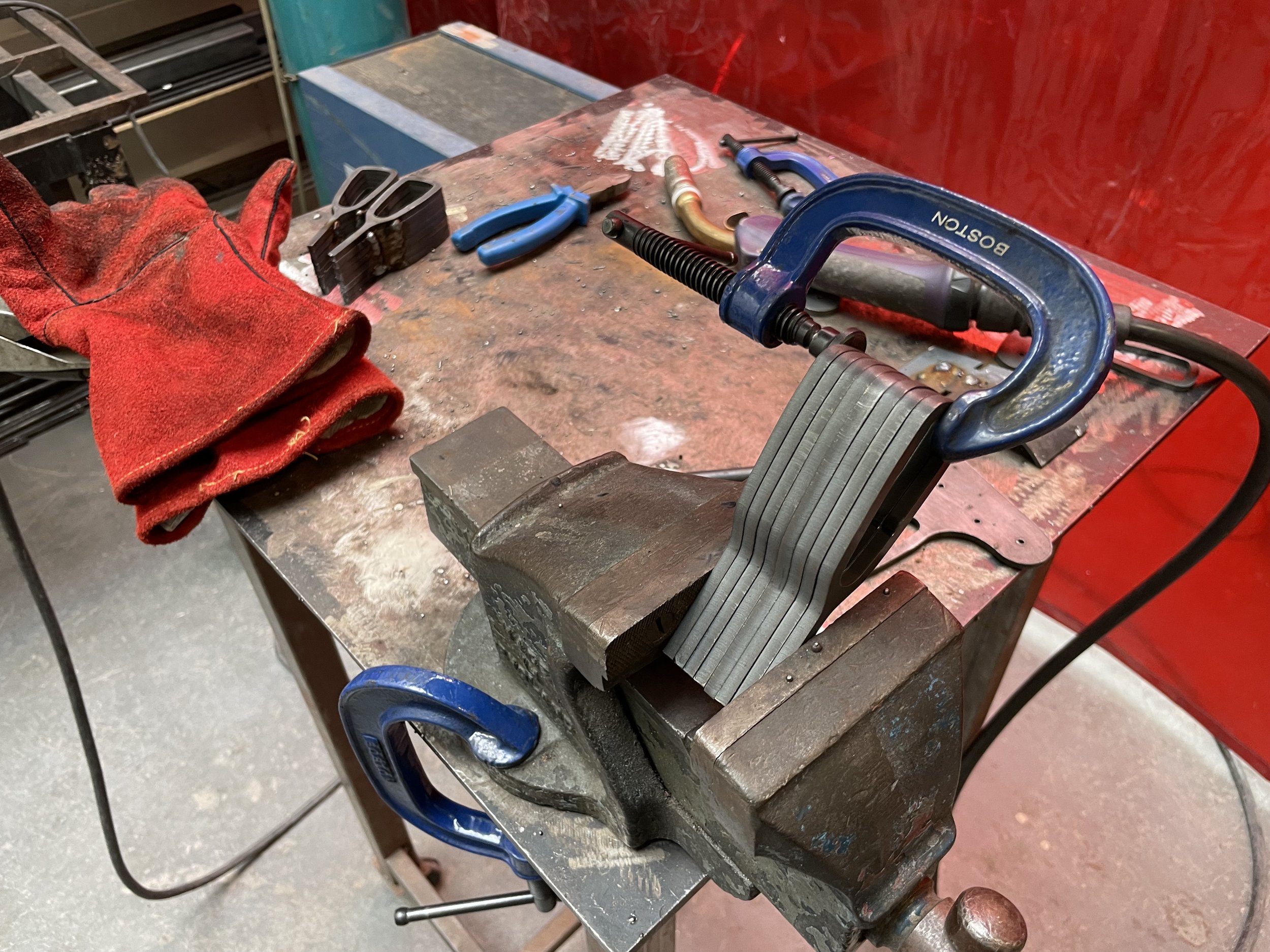Axe stool III
After completing my sketch, I progressed to creating a 3D model, which I then printed at the digital fabrication workshop. This was crucial for verifying the model’s measurements. During this phase, I encountered some challenges. Firstly, the inconsistency in the size of axe handles meant potential manual adjustments for each when assembling the stool. Secondly, the 3D-printed model struggled to meet the precision required for the 4-millimetre screw holes, leading to issues with screw fittings.
3D printed model
3D printed model
However, these issues paled in comparison to the major hurdle I faced during the metal casting phase. At the Chelsea foundry workshop, I learned that their casting machine was under repair, potentially delaying my project by weeks. This setback forced me to reconsider my approach.
Thankfully, Daniel, a technician, suggested an alternative: using a metal CNC cutter to cut and stack metal pieces. Although this method was a compromise, lacking the seamless appearance I envisioned, it was a viable solution.
CNC cutting
This foray into the metal workshop was a novel experience for me. I learned a multitude of skills, from welding to grinding, and became proficient with various equipment. Despite finding satisfaction in the work process, the final result didn’t quite meet my expectations. Achieving a balance between fine detail and small scale in metalwork proved to be challenging.
Welding
Welding




